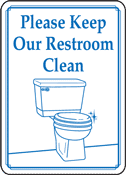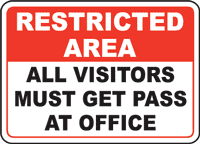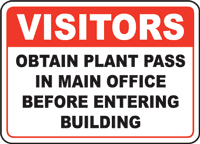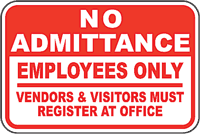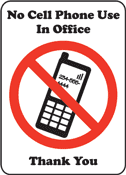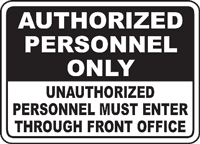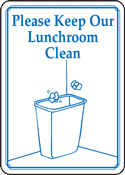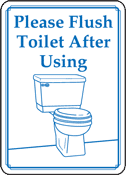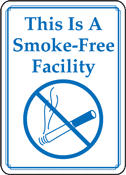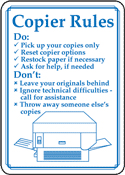Office safety:
Introduction:
The purpose an Office Safety program is to provide guidance to office managers and office staff on the elements of safe office work. The office is like any other work environment in that it may present potential health and safety hazards.
Most of these, however, may be minimized or eliminated by designing jobs and workplaces properly, and by taking into account differences among tasks and individuals. Inadequate environmental conditions, such as noise, temperature, and humidity, may cause temporary discomforts. In general, offices are safe places to work, but there are a number of practices that can be very hazardous.
Office Hazards:
- One of the worst office safety offenders is the file cabinet. Drawers left open are "striking against" hazards; opening a full top drawer when bottom drawers are empty or partly filled can cause the cabinet to tip over.
- Office Safety Programs must prohibit standing on chairs to reach high shelves is another dangerous practice; use a step stool or stepladder. And make sure you're not in front of a door that can swing inward and knock the ladder or stool over.
- Some offices use rotating duplicators. Watch for fingers and hand hazards, and be careful if you have long hair.
- Your office safety checklist must ensure electric typewriters, electric letter openers, paper shredders, and other electric appliances must be grounded or double-insulated. Severe shocks can be received, especially when operating in damp or wet conditions. Wires should not lie across traffic paths, as they are a serious tripping hazard.
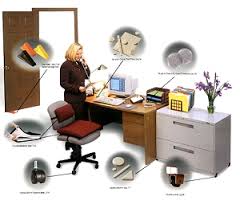
- Paper clips, pens, pencils, and some kinds of paper can cause slipping hazards, especially on vinyl floors. Pick them up when you see them, even if you aren't the one who dropped them.
- Carrying objects that block your view can bring about a serious collision. Be very cautious in approaching a door that can open toward you.
- Lifting a load improperly or lifting too heavy a load can result in back injuries and hernias. Your office safety program should address employee training: Lift with your legs, not your back, and get help with heavy or awkward loads.
- Let's take a look at drafting or art department office safety hazards. Perhaps compasses or drawing instruments are the worst offenders because of their very sharp points. Knives, paper edges, and paper cutters also require an alert and careful user. Push pins and thumbtacks can produce serious puncture wounds; so can sharp-pointed pencils and drawing pens
- Not often mentioned, but of great injury potential, is horseplay in the office. Rarely is any serious bodily harm intended when workers "fool around." However, some of the worst injuries, even fatalities, happen because of horseplay occurs in the office. It can happen anywhere, anytime.
Noise Hazards:
Noise can be defined very simply as unwanted sound. Whether a sound is classified as noise or not depends mostly on personal preferences. For noise levels in offices, the most common effects are interference with speech communication, annoyance, and distraction from mental activities. Noise in the office can interfere with communications. For example, it may be difficult to talk on the telephone when other people are talking nearby.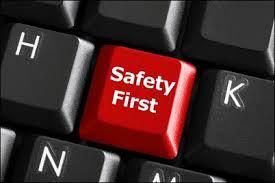
Speech is likely to interfere with communications especially if the speakers have similar voices.The annoying effect of noise can decrease performance or increase errors in some task situations. If the task requires a great deal of mental concentration, noise can be detrimental to performance. Also, there is some indication that unexpected or unpredictable noise can have more of an effect than continuous or periodic noise. The annoyance caused by noise also depends on the individual. Noise can also be distracting. A sudden noise can interrupt activity temporarily, such as when someone drops a heavy object.
Reducing Noise
Many unexpected noises cannot be controlled, as when someone accidentally drops something. For many of the annoying sounds in the office environment, the following measures are useful for reducing the level of noise or its effects:
- Select the quietest equipment if possible. When their is a choice between two or more products, sound levels should be included as a consideration for purchase and use.
- Provide proper maintenance of equipment, such as lubrication and tightening of loose parts that can cause noise.
- Locate loud equipment in areas where its effects are less detrimental. For example, place impact printers away from areas where people must use the phone.
- Use barriers walls or dividers to isolate noise sources. Use of buffers or acoustically-treated materials can absorb noise that might otherwise travel further. Rubber pads to insulate vibrating equipment can also help to reduce noise.
- Enclose equipment, such as printers, with acoustical covers or housings.
- Schedule noisy tasks at times when it will have less of an effect on the other tasks in the office.
Electrical Safety
Electric cords should be examined on a routine basis for fraying and exposed wiring. Particular attention should be paid to connections behind furniture, since files and bookcases may be pushed tightly against electric outlets, severely bending the cord at the plug. Electrical appliances must be designed and used in accordance with UL requirements.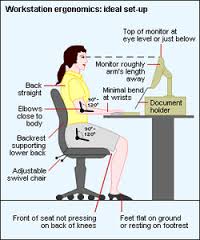
Use of Extension Cords:
- Extension cords shall only be used in situations where fixed wiring is not feasible.
- Extension cords shall be kept in good repair, free from defects in their insulation. They will not be kinked, knotted, abraded, or cut.
- Extension cords shall be placed so they do not present a tripping or slipping hazard.- Extension cords shall not be placed through doorways having doors that can be closed, and thereby damage the cord.
- All extension cords shall be of the grounding type (three conductor).
Housekeeping:
- Good housekeeping is an important element of accident prevention in offices.
- Poor housekeeping may lead to fires, injuries to personnel, or unhealthful working conditions. Mishaps caused by dropping heavy cartons and other related office equipment and supplies could also be a source of serious injuries to personnel.
- Passageways in offices should be free and clear of obstructions. Proper layout, spacing, and arrangement of equipment, furniture, and machinery are essential.
- All aisles within the office should be clearly defined and kept free of obstructions. Chairs, files, bookcases and desks must be replaced or repaired if they become damaged. Damaged chairs can be especially hazardous. Filing cabinet drawers should always be kept closed when not in use. Heavy files should be placed in the bottom file drawers.
- Materials stored within supply rooms must be neatly stacked and readily reached by adequate aisles. Care should be taken to stack materials so they will not topple over. Under no circumstances will materials be stacked within 18 inches of ceiling fire sprinkler heads or Halon nozzles. Materials shall not be stored so that they project into aisles or passageways in a manner that could cause persons to trip or could hinder emergency evacuation.
Computer Work Stations:
Complaints concerning musculoskeletal problems are frequently heard from computer operators. Most common are complaints relating to the neck, shoulders, and back. Others concern the arms and hands and occasionally the legs.Certain common characteristics of VDT jobs have been identified and associated with increased risk of musculoskeletal problems.
These include:
- Design of the workstation.
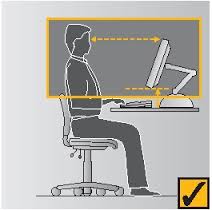
- Nature of the task.
- Repetitiveness of the job.
- Degree of postural constraint.
- Work pace.
- Work/rest schedules.
- Personal attributes of individual workers.
The key to comfort is in maintaining the body in a relaxed, natural position. The ideal work position is to have the arms hanging relaxed from the shoulders. If a keyboard is used, arms should be bent at right angles at the elbow, with the hands held in a straight line with forearms and elbows close to the body. The head should be in line with the body and slightly forward.
Display Screens:
When work is conducted at a computer, the top of the display screen should be at, or just slightly below, eye level. This allows the eyes to view the screen at a comfortable level, without having to tilt the head or move the back muscles.Control glare at the source whenever possible; place VDTs so that they are parallel to direct sources of light such as windows and overhead lights, and use window treatments if necessary. When glare sources cannot be removed, seek appropriate screen treatments such as glare filters. Keep the screen clean.
Your Chair:
The chair is usually the most important piece of furniture that affects user comfort in the office. The chair should be adjusted for comfort, making sure the back is supported and that the seat pan is at a height so that the thighs are horizontal and feet are flat on the floor. An ergonomically sound chair requires four degrees of freedom - seat pan tilt, backrest angle, seat height, and backrest height. Operators can then vary the chair adjustments according to the task. In general, chairs with the most easily adjustable dimensions permit the most flexibility to support people's preferred sitting postures.Armrests on chairs are recommended for most office work except where they interfere with the task. Resting arms on armrests is a very effective way to reduce arm discomforts. Armrests should be sufficiently short and low to allow workers to get close enough to their work surfaces, especially for tasks that require fixed arm postures above the work surface.
Working Height: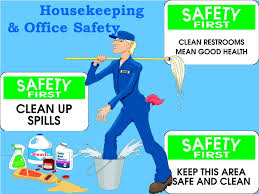
The work surface height should fit the task. The principle is to place the surface height where the work may be performed in such a manner as to keep arms low and close to the body in relation to the task. If the working height is too high, the shoulders or the upper arms have to be lifted to compensate, which may lead to painful symptoms and cramps at the level of the neck and shoulders. If, on the other hand, the working height is too low, the back must be excessively bowed, which may cause backache. Generally, work should be done at about elbow height, whether sitting or standing. Adjustable work stations should be provided so that individuals may change the stations to meet their needs. A VDT workstation without an adjustable keyboard height and without an adjustable height and distance of the screen is not suitable for continuous work.
Work/Rest Schedules:
One solution for stress and fatigue is to design the computer operator's work so that tasks requiring concentrated work at the terminal are alternated with non-computer based tasks throughout the workday. Also, a short break (5-10 minutes) should be taken at least once each hour when involved in continuous work at the computer.
Other Solutions:
Additional measures that will aid in reducing discomfort while working with VDTs include:
• Change position, stand up or stretch whenever you start to feel tired.
• Use a soft touch on the keyboard and keep your shoulders, hands, and fingers relaxed.
• Use a document holder, positioned at about the same plane and distance as the display screen.
• Rest your eyes by occasionally looking off into the distance.
Office Lighting:
Different tasks require different levels of lighting. Areas in which intricate work is performed, for example, require greater illumination than warehouses. Lighting needs vary form time to time and person to person as well. One approach is to use adjustable task lighting that can provide needed illumination without increasing general lighting.Task lamps are very effective to supplement the general office light levels for those who require or prefer additional light. Some task lamps permit several light levels. Since task lamps are controlled by the individual, they can accommodate personal preferences.
Indoor Air Quality: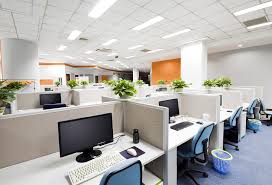
Indoor air quality (IAQ) is an increasingly important issue in the work environment. The study of indoor air quality and pollutant levels within office environments is a complex problem. The complexity of studying and measuring the quality of office environments arises from various factors including:
- Office building floor plans are frequently changing to accommodate increasingly more employees and reorganization.
- Office buildings frequently undergo building renovations such as installation of new carpet, modular office partitions and free-standing offices, and painting.
- Many of the health symptoms appearing are vague and common both to the office and home environment.
- In general, very little data on pollutant levels within office environments is available.
- Guidelines or standards for permissible personal exposure limits to pollutants within office buildings are very limited.Many times odors are associated with chemical contaminants from inside or outside the office space, or from the building fabric. This is particularly noticeable following building renovation or installation of new carpeting. Out gassing from such things as paints, adhesives, sealants, office furniture, carpeting, and vinyl wall coverings is the source of a variety of irritant compounds. In most cases, these chemical contaminants can be measured at levels above ambient (normal background) but far below any existing occupational evaluation criteria.
Waste Disposal:
Office personnel should carefully handle and properly dispose of hazardous materials, such as broken glass. A waste receptacle containing broken glass or other hazardous material, should be labeled to warn maintenance personnel of the department.
Know Emergency Procedures:
Last but not least, good office safety includes knowing the locations of fire extinguishers and the proper fire escape route. Access to extinguishers or escape routes must never be blocked.
25 steps you can take to reduce the risk of injury among your office staff:
Falls:
Slips, trips and falls, the most common type of office injury, sidelined 25,790 workers in 2008, according to BLS. The National Safety Council says employees are 2.5 times more likely to suffer a disabling fall in an office setting than anywhere else. Several hazards contribute to these injuries, although most can be significantly reduced, often by raising awareness among employees.
1
Stay clutter-free
Boxes, files and various items piled in walkways can create a tripping hazard, according to OSHA. Be certain that all materials are safely stored in their proper location to prevent buildup of clutter in walkways. Further, in addition to posing an electrical hazard, stretching cords across walkways or under rugs creates a tripping hazard, so ensure all cords are properly secured and covered.
2
Step on up
Standing on chairs – particularly rolling office chairs – is a significant fall hazard. Workers who need to reach something at an elevated height should use a stepladder. The Chicago-based American Ladder Institute cautions that stepladders must be fully opened and placed on level, firm ground. Workers should never climb higher than the step indicated as the highest safe standing level.
3
Maintain a clear line of vision
Workers can collide when making turns in the hallways and around blind corners or cubicle walls. The National Safety Council suggests installing convex mirrors at intersections to help reduce collisions. If workers can see who is coming around the corner, collisions are less likely to occur.
4
Get a grip
Carpeting and other skid-resistant surfaces can serve to reduce falls. Marble or tile can become very slippery – particularly when wet, according to the National Safety Council. Placing carpets down can be especially helpful at entranceways, where workers are likely to be coming in with shoes wet from rain or snow.
Struck/caught by: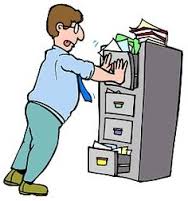
Another major type of injury in the office setting comes from workers being struck by or caught by an object. Incidents of this nature accounted for 15,680 injuries in 2008, according to BLS.
5
Shut the drawer
File cabinets with too many fully extended drawers could tip over if they are not secured, the council warns. Additionally, open drawers on desks and file cabinets pose a tripping hazard, so be sure to always completely close drawers when not in use.
6
Safe stacking
According to the Office of Compliance, which oversees the safety of U.S. congressional workers, proper storage of heavy items can help reduce the number of office injuries. Large stacks of materials and heavy equipment can cause major injuries if they are knocked over. OOC recommends storing heavy objects close to the floor, and warns that the load capacity of shelves or storage units should never be exceeded.
Ergonomics injuries:
Perhaps the most prevalent injuries in an office setting are related to ergonomics. Because office workers spend the bulk of their day seated at a desk and working on a computer, they are prone to strains and other injuries related to posture and repetitive movement. Ergonomics hazards can be difficult to detect. “Most office conditions that can be described as hazardous from an ergonomics perspective would appear quite innocuous to the everyday observer,” said Marc Turina, principal consultant for ErgoSmart Consultants in McKees Rocks, PA.
7
Provide adjustable equipment
One size does not fit all in an office workstation. “Adjustability is the key,” Turina said. “Chairs, work surfaces, monitor stands, etc., should all be adjustable in order to accommodate the widest range of employees.” He recommended presenting a variety of options to employees. Although employers may be reluctant to pay for expensive ergonomic equipment, experts insist the equipment is a wise investment. “A good keyboard tray may retail around $300; a good chair may retail around $500 to $700,” said Sonia Paquette, professional ergonomist and doctor of occupational therapy. She points out that the cost of the health claims that stem from not having these devices is much higher. “Some of these hard claims cost many tens of thousands of dollars just of medical treatment, let alone cost of replacement, absenteeism, loss of work production, etc.”
8
Train workers on how to use equipment
Providing adjustable furniture and equipment is only the first step in creating an ergonomically sound workstation. “A big issue that I have encountered a lot lately is employee inability to properly adjust their own office chairs,” Turina said. “Many times, employers can invest $500 in an excellent adjustable chair, but employees still experience a bad workstation fit.” The problem often is twofold: Workers do not know how to adjust their equipment, and they do not know the most ergonomically beneficial way to set up their workstation. Train workers on both the ideal setup and how to operate adjustable equipment accordingly.
9
Keep your feet on the floor
One of the first questions Paquette asks workers is whether their feet touch the floor when seated at their desk. “It sounds like an incredibly simple question,” she said, “but very often workers have their keyboard tray on the desktop, so in order to reach it, they need to jack up their chair so high that their feet can barely touch the floor.” She added that unless an employee’s feet are on the floor, a chair will not be able to reduce pain and discomfort. She recommended options such as adjustable keyboard trays or rolling tables adjusted to the proper height to eliminate this problem. Although footrests are a “second-best option,” their small surface may impede some of the worker’s movement.
10
Provide document holders
Frequently typing from hard copy can lead to neck strain if a worker is forced to repeatedly look down to the desk and back to the computer screen. Turina recommends providing document holders to reduce this strain. “These document holders are reasonably priced, and eliminate excessive cervical motion and help to prevent muscle imbalances,” he said. Document holders also are good for the eyes, according to the St. Louis-based American Optometric Association. Keeping reference materials close to the monitor reduces the need for your eyes to change focus as you look from the document to the monitor.
11
Correct mouse placement
Paquette often sees workstations where the computer keyboard is on a tray, but the mouse remains on the desk. “That spells disaster for the neck and shoulder on the side of that mouse,” she said. She recommends that the mouse always be placed beside the keyboard.
Vision problems:
Although looking at a computer monitor cannot damage your eyes, spending a large portion of your workday at the computer can cause eyestrain, according to Chicago-based Prevent Blindness America. Eyes can become dry and irritated, and workers may begin having trouble focusing. A few work area adjustments can help alleviate some of these issues.
12
Dim the lights and use task lamps
Florescent lights in office buildings often are too bright for optimal vision. According to the American Optometric Association, light that is at about half-normal office levels is preferred. This can be achieved by removing some bulbs from overhead fixtures. If more light is needed for a particular task, the British Columbia Public Service Employee Relations Commission recommends providing individual task lamps rather than increasing overall lighting. The commission cautions that lightbulbs in task lamps should be fully recessed to avoid the creation of a bright spot in the worker’s line of vision.
13
Correctly position monitors
Prevent Blindness America recommends workers place their computer monitors slightly below eye level and 20-26 inches from their eyes. Screens that can tilt or swivel are especially beneficial. “Your eyes’ resting position is a few degrees below the horizon when you’re looking straight ahead,” Paquette said.
14
Minimize screen glare
The American Optometric Association points to screen glare as a major cause of eyestrain in the office. To minimize strain, avoid positioning monitors opposite open windows, or be sure to always close shades or blinds. A glare reduction filter also can be used.
15
Wear the right glasses
Workers should tell their eye doctor if they spend a large portion of the day working on the computer, the association recommends. The doctor can check the efficiency of vision at 20-30 inches – the typical distance a computer monitor should be placed. Glasses are available for computer use that allow the wearer to see the full monitor without having to excessively strain the neck.
16
Increase font size on computer
Small font sizes on the computer can strain both your vision and your neck, as workers tend to pull the head forward to view smaller print. A simple adjustment to the font size on the computer screen can eliminate the need for this. “In many software programs, you can use the CTRL-scroll up or down or CTRL+ or CTRL- to increase or reduce the size of the page you are looking at,” Paquette said.
17
Take a break
Giving your eyes a rest and allowing them to focus on things at varying distances can help reduce strain and fatigue. OSHA recommends workers take a 10-minute break for every hour spent on the computer. These breaks can include working on tasks that require your eyes to focus on objects at a further range.
Fire safety:
Local fire departments responded to approximately 3,830 office fires each year between 2004 and 2008, according to the Quincy, MA-based National Fire Protection Association. On average, these fires caused four civilian deaths and 37 civilian injuries annually. Some routine inspections around the office can help reduce the likelihood of fire causing such devastation.
18
Maintain cords in good repair
According to the Office of Compliance, damaged and ungrounded power cords pose a serious fire hazard and violate safety codes. Cords should be inspected regularly for wear and taken out of service if they are frayed or have exposed wire. Further, cords should never be used if the third prong has been damaged or removed. Make sure cords are not overloading outlets. The most common causes of fires started by extension cords are improper use and overloading. Extension cords should be approved by a certifying laboratory such as Underwriters Laboratories, and only used temporarily to connect one device at a time.
19
Inspect space heaters
If employees use space heaters, verify the devices are approved for commercial use and have a switch that automatically shuts off the heater if the heater is tipped over, the Office of Compliance suggests. Further, make sure space heaters are not powered through an extension cord or placed near combustible materials such as paper.
20
Never block fire sprinklers
Furniture and tall stacks of materials can block the range of fire sprinklers, reducing their effectiveness in the event of an emergency. Objects should never be placed higher than 18 inches below sprinkler heads to allow a full range of coverage, according to the Office of Compliance.
21
Do not block escape routes or prop open fire doors
Items never should be stored along an emergency exit route. These paths should remain free of clutter, according to OSHA. Fire doors should not be held open by unapproved means (such as with a garbage can or chair), as this creates a significant fire hazard.
Administrative controls:
In addition to employee training and improved equipment, certain administrative controls can aid hazard recognition and the elimination of potentially dangerous situations.
22
Conduct walk-throughs
Periodically walking around the office can help with hazard recognition and maintenance of ergonomic task design. Turina recommended employers conduct an ergonomics screen of every workstation at least once a year. “Employee complaints are invaluable in the process, but yearly reassessments can help to ensure that a good fit is maintained between employee and workstation,” he said.
23
Monitor signs of musculoskeletal disorders
Recognizing the symptoms of musculoskeletal disorders can alert employees of the need to make an ergonomics alteration to their workstation. But workers need to know what those warning signs are. “Lots of musculoskeletal injuries developing from poor ergonomics start out asymptomatically and can become quite severe by the time an employee starts to experience symptoms,” Turina said. Pay attention to any pain, fatigue, numbness or weakness, as these may be signs of an ergonomics problem and the start of a more serious MSD.
24
Talk to employees about their concerns
Simply asking workers how they are feeling can go a long way toward recognizing hazards. “Employers need to take advantage of the cases where employees are experiencing symptoms like discomfort and fatigue early on, when quick, inexpensive interventions can usually solve the problem,” Turina said. “Ignoring these early warning signs can lead to employee suffering and astronomical cost in some cases.”
25
Establish employee reporting systems
Establishing an employee reporting system can be the best way for organizations to get a handle on potential hazards before they cause injury. Consider creating an anonymous reporting process that encourages workers to come forward with their concerns. “Research shows that early intervention yields the most cost-efficient results in all areas,” Paquette said.
SAFETY SIGNAGE FOR OFFICE
Click the below link to know safety moment and office safety check sheet

Office safety - Safety Moment - Part-1
Office safety - Safety Moment - Part-2
Office safety - Safety check sheet-1
Office safety - Safety check sheet-2
